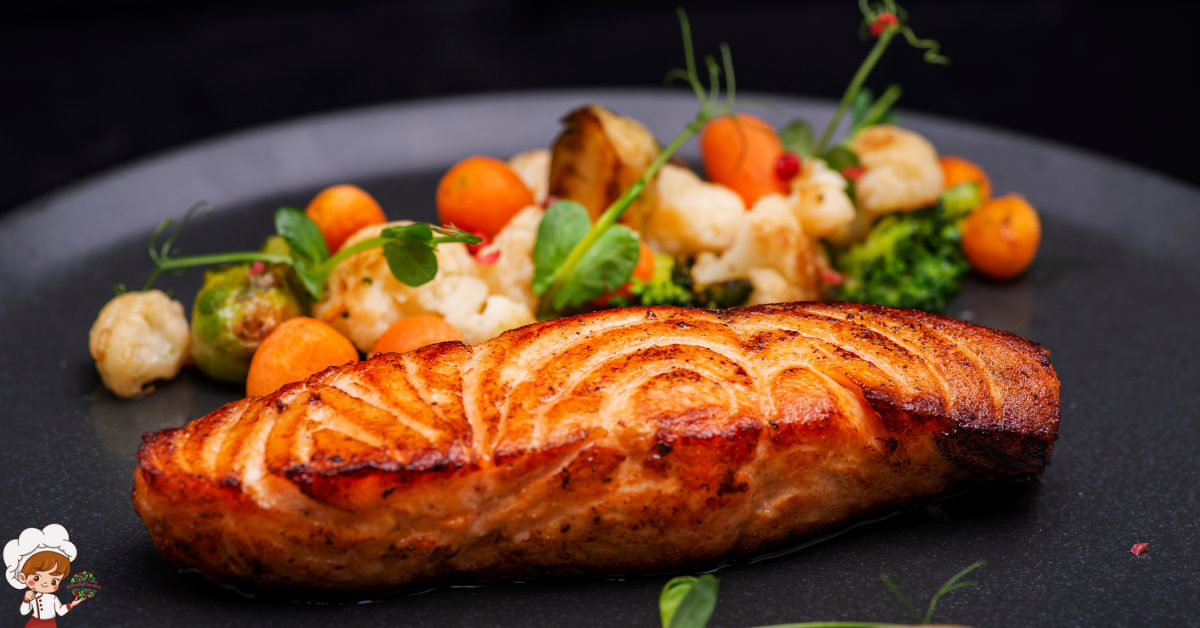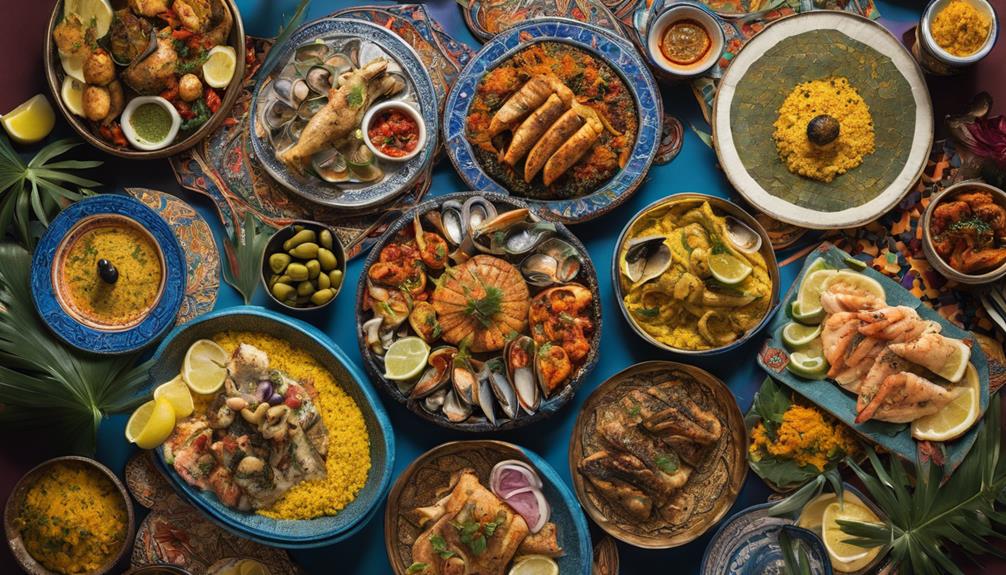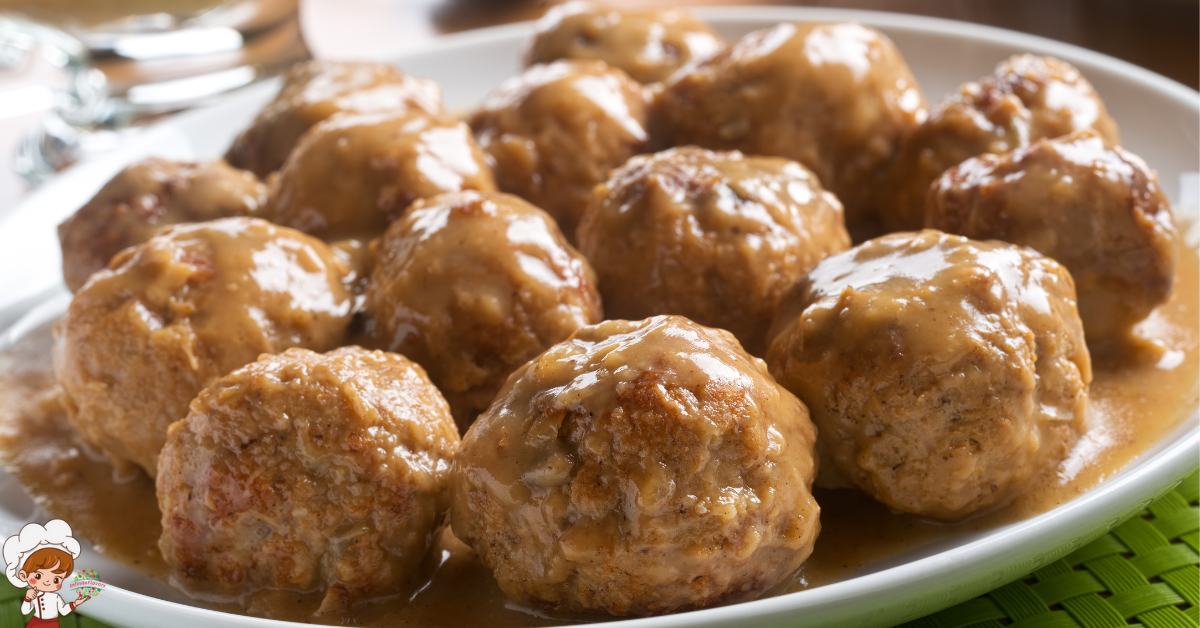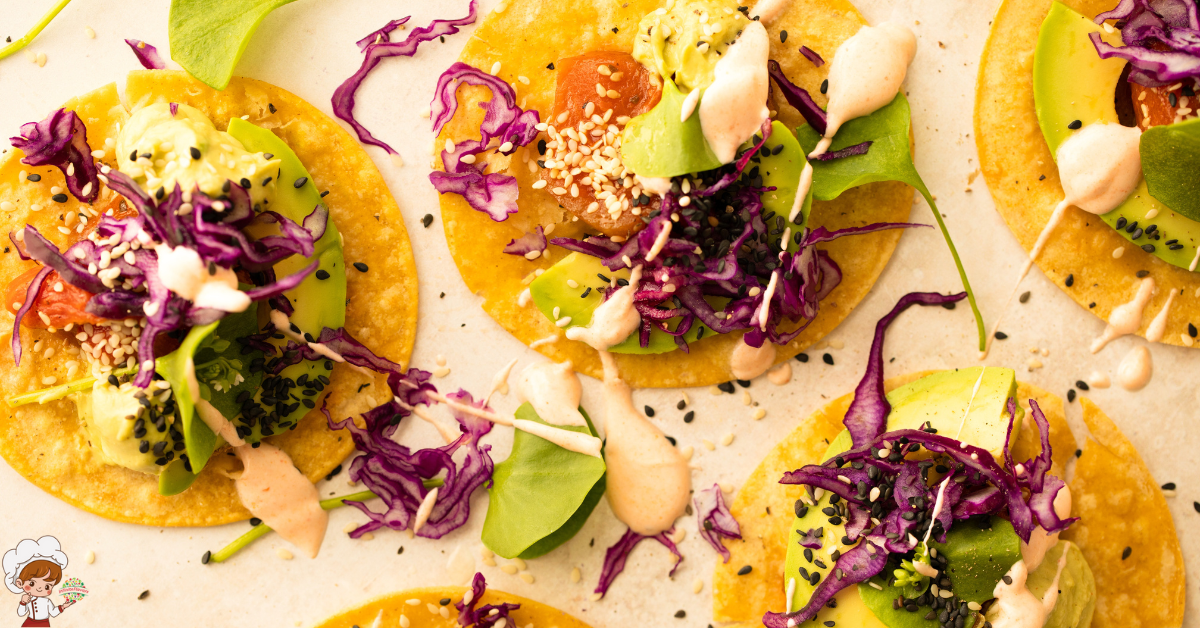The Best Kept Secrets of Asian Grilling Techniques
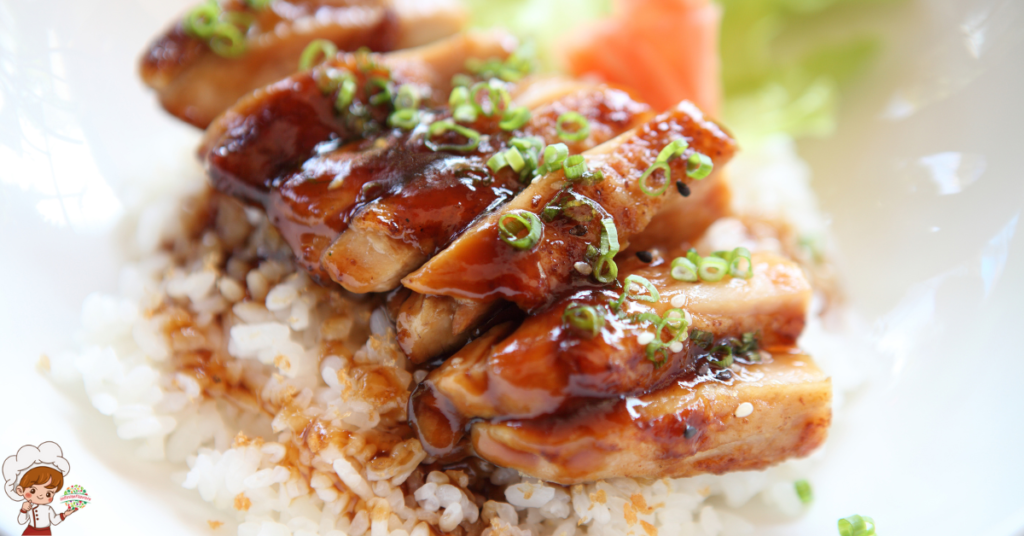
Do you know the secrets behind the mouthwatering flavors of Asian grilled dishes? Unveiling Secrets of Asian Grilling Techniques takes you on a culinary journey to discover the hidden techniques that make these dishes so delicious.
From Indonesian Satays to Japanese Yakitori, Korean Bulgogi to Thai Grilled Seafood, this book reveals the insider tips and tricks that will transform your grilling game. Did you know that Chinese Char Siu is marinated in a sweet and savory sauce before grilling? Or that Vietnamese Lemongrass Beef is infused with aromatic herbs for irresistible flavor? Prepare to be amazed as you learn the authentic techniques behind Indian Tandoori Grilling, Filipino Inihaw, and Singaporean BBQ Stingray. Get ready to impress your friends and family with your newfound Asian grilling skills!
Asian Grilling Techniques: Indonesian Satays
If you’re a fan of grilled meats, you’ll love the flavorful Indonesian satays. These mouthwatering skewers of marinated and grilled meat are a staple in Indonesian cuisine. With a rich history and a variety of delicious recipes, Indonesian satays offer a unique and satisfying grilling experience.
The history of Indonesian satay dates back centuries, with its roots in the street food culture of Indonesia. Originally, satay was created as a way to preserve meat by marinating it in a mixture of spices and grilling it over an open fire. Over time, satay became a popular dish enjoyed by people of all backgrounds.
There are many popular Indonesian satay recipes, each with its own unique flavors and preparations. One of the most well-known is chicken satay, which features tender pieces of chicken marinated in a mixture of soy sauce, garlic, ginger, and lemongrass before being grilled to perfection. Another popular variation is beef satay, which uses strips of beef marinated in a mixture of coriander, cumin, and turmeric for a bold and aromatic taste.
Indonesian satays are typically served with a peanut sauce, which adds a creamy and slightly sweet flavor to complement the grilled meat. This sauce is made from ground peanuts, garlic, shallots, tamarind, and a hint of chili for some heat. The combination of the tender meat and the flavorful peanut sauce creates a harmonious balance of flavors that is truly irresistible.
Whether you’re grilling for a crowd or simply craving a delicious meal, Indonesian satays are a fantastic choice. With their rich history and variety of recipes, these flavorful skewers are sure to satisfy your taste buds and leave you wanting more. So fire up the grill and get ready to enjoy the mouthwatering goodness of Indonesian satays.
Asian Grilling Techniques: Japanese Yakitori
To continue exploring the world of Asian grilling techniques, let’s dive into the delicious realm of Japanese Yakitori. Yakitori, which translates to “grilled chicken,” is a popular Japanese dish that features skewered pieces of chicken grilled over charcoal. However, yakitori isn’t limited to just chicken. It can also include various other ingredients like beef, pork, seafood, or vegetables.
When it comes to yakitori grilling techniques, the traditional method involves using a special charcoal grill called a konro. This grill allows for precise control of the heat, resulting in perfectly cooked skewers. The skewers are typically cooked over high heat, which gives them a smoky flavor while keeping the meat juicy and tender. The grilling process requires constant attention and skill to ensure that each skewer is cooked to perfection.
One of the secrets behind the deliciousness of yakitori lies in its traditional sauces. There are two main sauces used in yakitori: tare and shio. Tare is a sweet and savory soy-based sauce that is brushed onto the skewers during grilling. It caramelizes on the meat, adding a rich and flavorful glaze. Shio, on the other hand, is a simple salt-based seasoning that enhances the natural flavors of the ingredients.
In addition to tare and shio, there are also other traditional yakitori sauces like negima or ponzu. Negima sauce is a combination of soy sauce and mirin, while ponzu is a tangy citrus-based sauce. These sauces add depth and complexity to the yakitori, elevating its taste to new heights.
Asian Grilling Techniques: Korean Bulgogi
Get ready to discover the secrets behind the irresistible Korean Bulgogi. First, we’ll explore the art of marinating, learning how to infuse the tender meat with a perfect balance of flavors. Next, we’ll uncover the ideal grilling temperature and timing to achieve that mouthwatering caramelization without overcooking. Finally, we’ll unveil the traditional side dishes that perfectly complement the rich and savory Bulgogi, elevating your dining experience to a whole new level.
Marinating Techniques for Bulgogi
To achieve the perfect flavor for your Bulgogi (Korean Bulgogi), start by marinating the meat in a delicious combination of soy sauce, garlic, ginger, and sesame oil. The marinating time is crucial in developing the rich and savory taste of the dish. Ideally, you should let the meat marinate for at least 2 hours, but if you have the time, overnight marination is highly recommended. This allows the flavors to penetrate deep into the meat, resulting in a more flavorful and tender Bulgogi.
When it comes to flavor combinations, the soy sauce provides a salty and umami base, while the garlic and ginger add a hint of spiciness and aroma. The sesame oil brings a nutty and toasty element that enhances the overall taste profile. Experiment with different ratios of these ingredients to find the perfect balance that suits your palate.
Asian Grilling Techniques: Grilling Temperature and Timing
For the best results when grilling Korean Bulgogi, it is important to consistently monitor the temperature and timing. Grilling at the right temperature ensures that the meat is cooked evenly and retains its juiciness. Preheat your grill to medium-high heat, around 375-450°F (190-230°C), for the perfect sear and caramelization. Remember to oil the grates to prevent sticking. Timing is crucial when grilling Bulgogi. Thinly sliced meat cooks quickly, so it’s essential to keep a close eye on it. Typically, it takes about 2-3 minutes per side to achieve a medium-rare to medium doneness.
However, it may vary depending on the thickness of the meat and the heat of your grill. To ensure safety, use a meat thermometer to check the internal temperature, which should be around 145°F (63°C). When grilling vegetables alongside Bulgogi, adjust the cooking time accordingly. Enjoy your deliciously grilled Korean Bulgogi with confidence, knowing that you’ve mastered the grilling temperature and timing.
Traditional Side Dishes Pairing
When grilling Korean Bulgogi, it is important to consider the traditional side dishes that pair perfectly with this flavorful dish. These side dishes complement the rich and savory flavors of the Bulgogi, providing a balanced and satisfying meal. Here are three traditional side dishes that will take your Bulgogi experience to the next level:
- Kimchi: This fermented cabbage dish is a staple in Korean cuisine. Its tangy and spicy flavors contrast beautifully with the sweetness of the Bulgogi marinade.
- Japchae: This stir-fried noodle dish is made with sweet potato noodles, vegetables, and a soy-based sauce. Its chewy texture and umami flavors make it an excellent companion to the Bulgogi.
- Grilled Vegetables: Enhance your Bulgogi feast by grilling an assortment of vegetables such as mushrooms, zucchini, and bell peppers. The smoky char and natural sweetness of the vegetables will complement the meaty goodness of the Bulgogi.
Asian Grilling Techniques: Thai Grilled Seafood
Get ready to tantalize your taste buds with the vibrant flavors of Thai Grilled Seafood. Discover the secrets of a mouthwatering marinade that will infuse your seafood with a burst of aromatic goodness. Learn expert grilling tips and tricks to achieve perfectly cooked seafood with a smoky char. Finally, master the art of selecting and preparing the freshest seafood to ensure a culinary experience that will transport you to the shores of Thailand.
Marinade and Flavors
Enhance the flavor of your Thai grilled seafood with a tangy and aromatic marinade. The marinade is the key to infusing the seafood with delicious Thai flavors that will leave your taste buds craving for more. Here are three marinade variations that will take your Thai grilled seafood to the next level:
- Lemongrass and ginger: Combine minced lemongrass, grated ginger, lime juice, fish sauce, and a touch of honey. This marinade adds a refreshing and zesty kick to your seafood.
- Coconut milk and curry paste: Mix coconut milk, red or green curry paste, lime juice, and a pinch of brown sugar. This marinade creates a rich and creamy coating on the seafood, with a hint of spiciness.
- Soy sauce and garlic: Create a marinade with soy sauce, minced garlic, lime juice, and a drizzle of sesame oil. This simple yet flavorful marinade enhances the natural taste of the seafood with a savory umami flavor.
Experiment with these marinades and discover a whole new world of Thai grilled seafood flavors.
Grilling Tips and Tricks
To achieve perfectly grilled Thai seafood, it is important to employ some essential tips and tricks. Grilling seafood can be a delicate process, but with the right techniques, you can create a mouth-watering dish that captures the flavors of Thailand. When grilling vegetables, make sure to cut them into even-sized pieces so they cook evenly. You can also brush them with oil to prevent sticking and enhance their natural flavors.
As for grilling safety tips, always preheat your grill before cooking to ensure even heat distribution. Keep a close eye on the flames and use long-handled tongs or spatulas to avoid getting too close to the heat. Finally, remember to clean your grill thoroughly after each use to prevent any leftover residue from affecting the taste of your next meal. With these tips and tricks, you’ll be on your way to mastering the art of Thai grilled seafood.
Seafood Selection and Preparation
To ensure the best results when grilling Thai seafood, it is crucial to carefully select and prepare the freshest ingredients available. Here are three key tips to help you achieve mouthwatering Thai grilled seafood:
- Seafood Selection: Choose high-quality, fresh seafood such as prawns, fish fillets, or squid. Look for firm flesh, clear eyes, and a pleasant oceanic smell. Opt for sustainable options to support the environment.
- Seasoning Techniques: Thai grilled seafood is known for its bold flavors. Marinate the seafood in a mixture of lime juice, fish sauce, garlic, and chili for at least 30 minutes. This will infuse the seafood with tangy and spicy flavors.
- Grilling Equipment Recommendations: Use a charcoal grill or a gas grill with a cast-iron grate for authentic Thai flavors. The smoky aroma from the charcoal or the high heat from the gas grill will enhance the taste and texture of the grilled seafood.
Asian Grilling Techniques: Chinese Char Siu
Learn how to make the flavorful Chinese Char Siu at home with this easy recipe. Char Siu, also known as Chinese barbecued pork, is a popular dish in Chinese cuisine. The secret to its deliciousness lies in the marinating techniques and grilling temperature and timing.
To make the perfect Char Siu, start by marinating the pork overnight. The marinade typically consists of soy sauce, hoisin sauce, honey, Chinese five-spice powder, garlic, and red food coloring. The longer you marinate the meat, the more flavor it will absorb. The key is to let the flavors penetrate the pork, resulting in a tender and flavorful dish.
When it comes to grilling Char Siu, the temperature and timing are crucial. Preheat your grill to medium-high heat, around 375-400°F. This high heat will help caramelize the marinade, creating a beautiful glaze on the pork. Grill the pork for about 15-20 minutes per side, or until it reaches an internal temperature of 145°F. Be sure to baste the meat with the remaining marinade during grilling to enhance the flavor and keep it moist.
Once the pork is cooked to perfection, remove it from the grill and let it rest for a few minutes before slicing. Char Siu is commonly served with steamed rice or noodles, and the leftovers can be used in various dishes like fried rice or stir-fries.
Now that you have the secrets to making delicious Char Siu, it’s time to fire up the grill and impress your friends and family with this mouthwatering Chinese barbecue pork. Enjoy!
Asian Grilling Techniques: Malaysian Grilled Chicken
Get ready to experience the mouthwatering flavors of Malaysian Grilled Chicken. This popular dish is known for its bold and aromatic marinade, which infuses the chicken with a unique blend of spices and herbs. To achieve the perfect balance of flavors, Malaysian Grilled Chicken requires a combination of traditional marinade recipes and special grilling techniques. Here are three key elements that make this dish truly exceptional:
- Marinade Recipes: Malaysian Grilled Chicken is all about the marinade. The secret lies in the harmonious blend of ingredients, such as lemongrass, ginger, garlic, soy sauce, and a touch of sugar for caramelization. The marinade is typically left to work its magic for several hours or overnight, allowing the flavors to penetrate the meat and tenderize it. This results in juicy, flavorful chicken that is packed with the essence of Malaysia.
- Grilling Techniques: To achieve the perfect grilled chicken, Malaysians employ various techniques. One popular method is to cook the chicken over a charcoal fire, which imparts a smoky flavor and adds depth to the dish. The chicken is often basted with the remaining marinade during grilling, creating a sticky and caramelized exterior. Another technique is to use a grill basket or skewers to ensure even cooking and prevent the chicken from sticking to the grill.
- Serving Suggestions: Malaysian Grilled Chicken is incredibly versatile and can be enjoyed in different ways. It can be served as a main dish alongside steamed rice and a side of pickled vegetables for a complete meal. Alternatively, it can be sliced and used as a filling for sandwiches or added to salads for a burst of flavor. No matter how you choose to enjoy it, Malaysian Grilled Chicken is sure to tantalize your taste buds with its aromatic spices and succulent texture.
Now that you know the secrets behind Malaysian Grilled Chicken, it’s time to fire up your grill and embark on a culinary adventure. Prepare to be delighted by the mouthwatering flavors and irresistible aromas that this dish brings to the table.
Asian Grilling Techniques: Vietnamese Lemongrass Beef
Get ready to tantalize your taste buds with the flavors of Vietnamese Lemongrass Beef! This mouthwatering dish is all about the marinating techniques that infuse the meat with a burst of flavor and the cooking temperature that ensures tender and juicy results. With the right combination of lemongrass, garlic, fish sauce, and other aromatic ingredients, you’ll be grilling up a delicious and authentic Vietnamese dish in no time.
Marinating Techniques for Flavor
To enhance the flavor of your Vietnamese Lemongrass Beef, marinate the meat with a generous amount of lemongrass-infused sauce. The marinade will not only tenderize the beef but also infuse it with the aromatic flavors of lemongrass, garlic, and soy sauce. Here are three marinating techniques that will take your dish to the next level:
- Create a marinade by combining minced lemongrass, garlic, soy sauce, fish sauce, sugar, and black pepper. Massage the mixture into the beef and let it marinate for at least 2 hours, or overnight for maximum flavor.
- For a more intense flavor, blend lemongrass, garlic, shallots, fish sauce, sugar, and lime juice into a smooth paste. Coat the beef with the paste and let it marinate for at least 4 hours.
- For a quick and easy option, use a store-bought lemongrass marinade. Simply pour it over the beef and let it marinate for the recommended time.
Cooking Temperature for Tenderness
Achieve optimal tenderness in your Vietnamese Lemongrass Beef by cooking it at the right temperature. Grilling is a popular cooking method that imparts a unique smoky flavor to meats and vegetables. When grilling vegetables, it is important to use high heat to achieve a crispy exterior while maintaining a tender interior.
However, when it comes to cooking meat, including Vietnamese Lemongrass Beef, it is crucial to cook it at a lower temperature for a longer time to ensure tenderness. Cooking the beef at a high temperature can result in a tough and chewy texture. Additionally, after cooking, it is essential to let the meat rest for a few minutes. This allows the juices to redistribute, resulting in a more flavorful and tender meat. So, the next time you prepare Vietnamese Lemongrass Beef, remember to adjust the cooking temperature and allow for resting time to achieve the perfect tenderness.
Asian Grilling Techniques: Indian Tandoori Grilling
You can easily master the art of Indian Tandoori grilling by understanding its distinctive flavors and techniques. Tandoori grilling is a traditional method of cooking in India, where food is marinated in a yogurt-based mixture and cooked in a clay oven called a tandoor. This cooking technique imparts a unique smoky flavor to the dishes and gives them a beautiful charred exterior.
To help you navigate the world of Indian Tandoori grilling, here are three key things to know:
- Marinade Variations: The marinade used in Tandoori grilling is a crucial element that adds flavor and tenderizes the meat. While the classic marinade consists of yogurt, lemon juice, and a blend of spices like cumin, coriander, and turmeric, there are variations that incorporate ingredients like ginger, garlic, and even papaya or pineapple for additional tenderness. Experimenting with different marinade combinations can elevate the flavors of your grilled dishes.
- Cooking Techniques: Tandoori grilling involves high heat cooking in a clay oven, which can reach temperatures of up to 900°F (482°C). For best results, preheat your grill or oven to a high temperature to mimic the intense heat of a tandoor. Place the marinated meat directly on the grill grates or skewer them for even cooking. Keep a close eye on the meat, turning it frequently to prevent burning. The result is tender and juicy meat with a smoky, charred exterior.
- Serving Suggestions: Tandoori grilled dishes are often served with fresh naan bread, mint chutney, and a side of cooling yogurt sauce. You can also pair them with fragrant basmati rice and a variety of Indian side dishes like vegetable curries or lentil dal. The combination of flavors and textures creates a satisfying and authentic Indian meal.
Asian Grilling Techniques: Filipino Inihaw
The next Asian grilling technique to explore is Filipino Inihaw, which showcases the vibrant flavors of the Philippines. Inihaw is a traditional Filipino grilling method that involves marinating meat, seafood, or vegetables in a variety of flavorful marinades before grilling them to perfection. This technique not only adds depth and complexity to the dish but also tenderizes the ingredients, making them juicy and succulent.
When it comes to marinade variations for Filipino Inihaw, the options are endless. One popular marinade is made with soy sauce, calamansi juice (a local citrus fruit), garlic, and black pepper. This combination gives the dish a tangy and savory flavor profile. Another common marinade includes vinegar, soy sauce, garlic, and brown sugar, which adds a hint of sweetness to balance out the acidity.
In terms of grilling techniques, Filipinos often use charcoal grills to achieve that distinct smoky flavor. The meat or seafood is placed on skewers or grates and cooked over hot coals, allowing the flavors to meld together beautifully. This grilling method creates a delicious charred exterior while keeping the inside moist and flavorful.
Filipino Inihaw is a versatile technique that can be used to grill various ingredients, such as pork, chicken, fish, squid, or even vegetables like eggplant and corn. The marinades and grilling techniques can be adapted to suit personal preferences and the ingredients at hand. Whether you’re enjoying a leisurely backyard barbecue or exploring street food stalls in the Philippines, Filipino Inihaw is sure to delight your taste buds with its bold and vibrant flavors.
Asian Grilling Techniques: Singaporean BBQ Stingray
Singaporean BBQ Stingray is a delectable seafood dish that showcases the unique flavors and grilling techniques of Singapore. This popular street food is a must-try for seafood lovers visiting the vibrant city-state. Here are three reasons why Singaporean BBQ Stingray should be on your foodie bucket list:
- Flavorful Stingray: The star of this dish is the stingray, which is marinated in a tangy and spicy sauce before being grilled to perfection. The marinade typically includes ingredients like soy sauce, lime juice, garlic, and chili paste, giving the stingray a burst of flavor. The grilling process adds a smoky and charred taste that enhances the overall experience.
- Traditional Banana Leaf Wrapping: To elevate the flavors even further, the marinated stingray is wrapped in a banana leaf before being grilled. This method not only infuses the fish with a subtle earthy aroma but also helps to keep it moist and tender during the grilling process. The banana leaf also imparts a slight herbal note to the dish, adding complexity to each bite.
- Grilling Techniques for Vegetables: Singaporean BBQ Stingray is often served with a side of grilled vegetables, such as eggplant and okra. These vegetables are cooked using the same grilling techniques as the stingray, resulting in a smoky and charred flavor that perfectly complements the seafood. The grilling process brings out the natural sweetness and adds a delightful crunch to the vegetables, making them a delicious accompaniment to the star of the dish.
Frequently Asked Questions
How Long Should I Marinate the Meat for Indonesian Satays?
To ensure the perfect flavor for your Indonesian satays, marinate the meat for at least 4 hours. This will allow the flavors to penetrate the meat fully and create a delicious balance. Remember to also check out grilling tips for Vietnamese lemongrass chicken!
What Types of Sauces Are Commonly Used in Japanese Yakitori?
When grilling Japanese yakitori, there are various yakitori sauce variations to enhance the flavor. These sauces commonly include soy sauce, mirin, sake, and sugar. Unique ingredients like grated ginger or garlic can also be added for extra taste.
What Are Some Popular Side Dishes That Accompany Korean Bulgogi?
When grilling Korean bulgogi, there are several popular side dishes that complement its flavors. Some favorites include kimchi, pickled radishes, steamed rice, and lettuce wraps. These add freshness and balance to the dish.
Can You Provide a Recipe for a Thai Grilled Seafood Platter?
You’ll love this Thai grilled seafood platter recipe! It’s packed with delicious flavors and perfectly grilled seafood. Don’t forget to marinate your meat for Indonesian satays and try out the common sauces used in Japanese yakitori. And for side dishes, the popular ones for Korean bulgogi are a must-try. Lastly, don’t miss out on the techniques for grilling Chinese char siu. Get ready for a mouthwatering feast!
Are There Any Specific Techniques for Grilling Chinese Char Siu to Achieve Its Signature Smoky Flavor?
To achieve the signature smoky flavor of Chinese char siu, try these grilling techniques: marinate the meat in a flavorful sauce, use indirect heat for slow cooking, and baste with the marinade for added flavor.
Conclusion
In conclusion, Asian grilling techniques offer a multitude of flavors and textures that are sure to tantalize your taste buds. From the smoky Indonesian Satays to the succulent Japanese Yakitori and the bold Korean Bulgogi, each dish brings its own unique twist to the grill. Whether you prefer the delicate Thai Grilled Seafood or the sweet and savory Chinese Char Siu, there is something for everyone. So fire up the grill and embark on a delicious journey through the diverse and mouthwatering world of Asian grilling.



